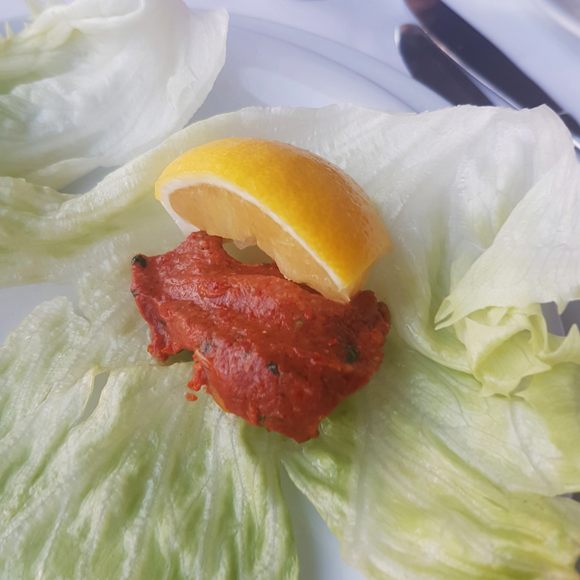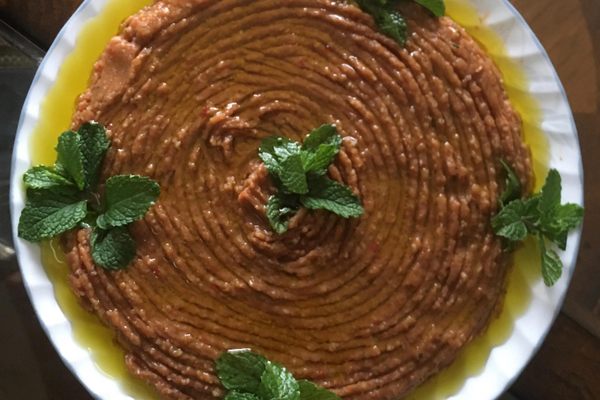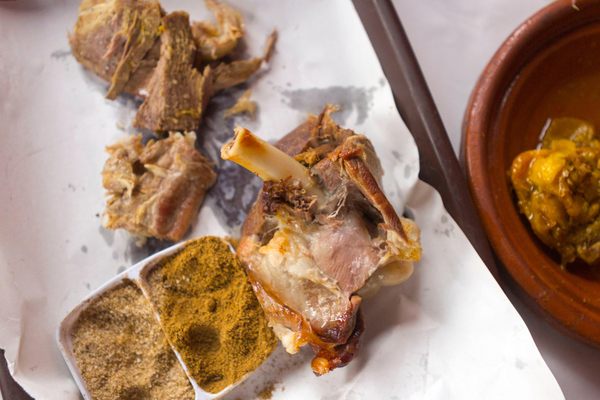Meats & Animal Products
Çiğ Köfte
Turkish legends trace these raw meatballs to the time of the prophet Abraham.
“Anything more raw than this would cry when you bit into it,” write Armenian-American food bloggers Robyn and Doug Kalajian. They’re referring to chi kofte, or çiğ köfte in Turkish, a meatball made of ground lamb, beef, or goat mixed with bulgur, onions, spices, and tomato or pepper paste. Closely related to Lebanese kibbeh nayyeh and a more distant relative of steak tartare, this Turkish and Armenian delicacy has, according to some legends, been enjoyed since the time of the prophet Abraham.
Residents of the southeastern Turkish city of Urfa, said to be the biblical patriarch’s homeland, claim the dish as their own. According to local legend, a cook during Abraham’s time (in some versions, his wife, in others Abraham himself) had a cut of meat but no firewood to cook it. Making the best of the situation, the cook ground the meat into a smooth paste, combined it with bulgur and spices, and an iconic dish was born.
In Armenia, raw chi kofte is topped with lemon and olive oil and often served alongside gheyma, a cooked ground meat preparation, and salata, a fresh mix of chopped tomato, cucumber, onion, and bell pepper. While Armenian cooks most often present the dish in meatball form, they sometimes flatten the meat and bulgur mixture in the same style as kibbeh nayyeh. Chi kofte is popular in restaurants across Armenia and in Armenian markets in the United States, where it’s often called “Armenian steak tartare.”
In Turkey, the mixture often includes grated tomato and urfa biber pepper paste, made from the smoky dried isot pepper famously grown in southeast Turkey. It’s eaten with lemon juice and sometimes wrapped in lettuce leaves. Turkish people believe that the act of kneading the paste with acid “cooks” it, and the entrancingly elaborate kneading process is definitely worth watching. The end result is creamy and rich, with a slight chew from the bulgur and bite from added onions.
While the Turkish government banned the street sale of raw çiğ köfte in 2009, you can still sample the meaty original in specially-licensed restaurants. The best way to try the dish, however, is to snag an invitation to someone’s home, where, if you’re lucky, they’ll roll out the red carpet of Turkish hospitality by serving you freshly made çiğ köfte, raw beef and all.
Where to Try It
-
Derian Restaurant
1/3 Buzand Street, Yerevan , 0010, ArmeniaThis spot is located near to Tufenkian Historic Hotel.
-
Çiğköfteci Ahmet Usta
Ünalan Mahallesi, Bestekar Cinuçen Tanrıkorur Caddesi, No 27/C, İstanbul, TurkeyYou'll likely find the vegetarian version of çiğ köfte at this popular spot.
Written By
 Reina Gattuso
Reina Gattuso
Sources
- www.geniuskitchen.com/recipe/armenian-steak-tartare-chee-kufta-143957
- www.facebook.com/ARMENIANANDMIDDLEEASTERNCOOKING/photos/-chi-koefte-chee-kufta-armenian-steak-tartarein-arabic-kibbe-nayeealways-grind-c/10150958254180794/
- www.thearmeniankitchen.com/2010/02/preparing-for-lent.html
- www.dailysabah.com/travel/2014/11/15/glorious-urfa-hospitality-culture-abrahams-legacy
- www.turnipseedtravel.com/blog/urfa-mardin-travel
- turkishcookingeveryday.blogspot.com/2012/01/cig-kofte-urfa-raw-meatballs.html
- heghineh.com/chi-kofte/
- www.mission-food.com/2011/07/chi-kofte-armenian-steak-tartare.html
- www.facebook.com/armenianinternationalcuisinesandmore/posts/chi-kofte-misatzavar-kibbeh-nayea-very-popular-raw-meat-appetizer-mezze-in-the-m/1625512057479038/
- www.turkishfoodandrecipes.com/2011/05/cig-kofte.html
- www.instagram.com/p/BpzeZyrnLq-/
- www.enjoy-istanbul.com/street-food/spicy-vegetarian-snack-cig-kofte/
The Atlas Obscura Podcast is Back!
















